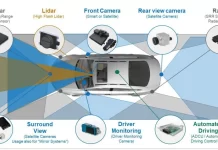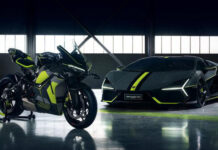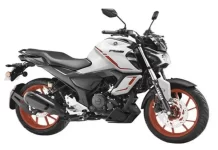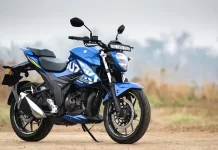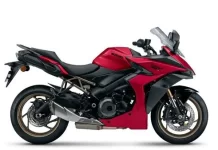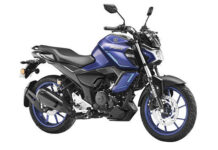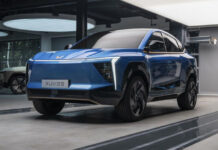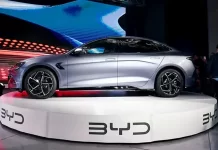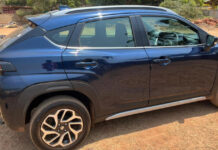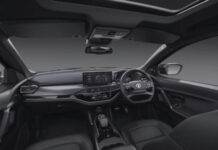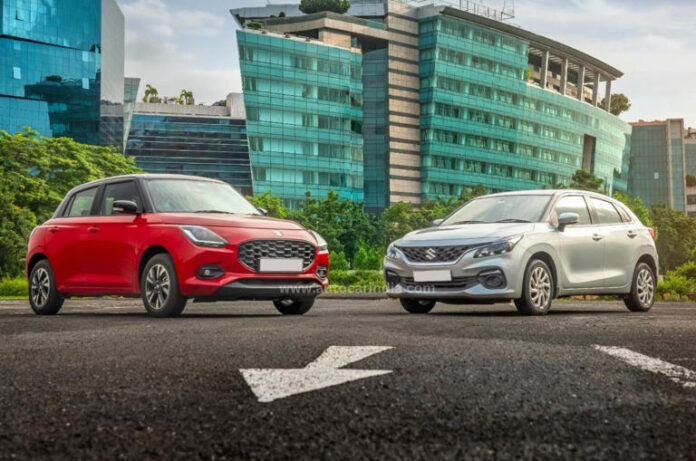Maruti Suzuki Swift vs Baleno
Design and engineering
The Swift’s unmistakable silhouette, its clamshell-like bonnet and a distinctive body line which runs through its length, shapes this new-gen’s character, as do L-shaped LED headlamps and an oval front grille. In this design, the Swift certainly looks more youthful, and in line with its exuberance, Maruti offers it with bright body colour options like the ‘Sizzling Red’ (worn by our test car); on the other hand, the Baleno is available with more mature colour options.
Dimensions
Both cars are based on Maruti’s Heartect platform, however the Baleno is shorter in height, but it is longer and wider, and its horizontally-oriented headlamps and tail lamps further accentuate its width. Its larger, 16-inch wheels complement its stance well, and the chrome garnishing on the grille and boot add a touch of premiumeness.
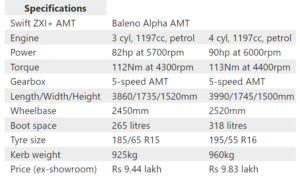
Interiors
The Swift’s layered dashboard with a free-standing screen follows a design philosophy similar to Baleno’s, however its dark themed cabin is devoid of vibrancy, which could have lifted its perceived quality and added to its youthful vibe. Both cars share several interior bits, which are mostly hard plastic which don’t feel very premium. Appreciably, the Swift’s flat-bottomed steering and superbly sculpted front seats feel very sporty.
With the Baleno, the designers have been more adventurous by opting for a blue and black colour scheme. In comparison, it gets a healthier dose of padded bits including a front armrest which adds to comfort. Furthermore, the driver gets steering reach and rake adjustment (Swift offers only rake adjustment), to fine tune your driving position.
Headroom and seat comfort are similar in both cars, however the Baleno’s longer wheelbase and wider rear bench, translates to more rear knee room and better shoulder room to accommodate a third passenger. Also, while both get three-point seatbelts for all rear passengers, only Baleno offers three adjustable rear head restraints; Swift gets just two.
Boot Space
The Baleno has a more voluminous 318-litre boot (versus the Swift’s 265 litres). For added flexibility, both get 60:40 split rear seats, and while their boot lips are high, the Swift’s is lower, which makes loading/unloading heavier cargo a bit easier.
Equipments & Safety
A fully loaded Swift ZXI+ AMT will cost you Rs 9.44 lakh ex-showroom, while a top-spec Baleno Alpha AMT is priced just Rs 39,000 higher. But the Baleno’s added outlay gets you a lot more. To start with, the Baleno gets wider 195/55 tyres with 16-inch alloys, compared to the Swift’s 185/65 R15 tyres. Then, it features tinted windows, head-up display, front armrest, telescopic steering adjustment and a 360-degree camera, all of which the Swift misses. Common features include auto LED headlamps, cruise control, climate control, 9-inch touchscreen, wireless Android Auto and Apple Carplay, wireless charging, rear AC vents, six airbags, ESP and hill-start assist being the prominent ones. The only feature that the Swift gets over the Baleno is the option of a dual paint colour scheme.
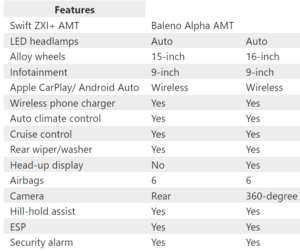
Performance
The Swift’s new 82hp three-cylinder petrol engine is down on power compared to the Baleno’s 90hp four-cylinder petrol engine, but we’re happy to report, the Swift’s drivability doesn’t feel compromised. Actually, it feels adequately peppy in the urban environment and its 5-speed automated manual transmission (AMT) is well tuned too. In fact, the AMT feels smoother and more intuitive compared to the Baleno’s AMT unit.
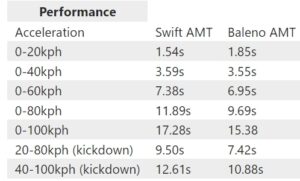
Ride & Handling
Small tweaks to the fourth-gen Swift have resulted in improved driving dynamics. The Swift feels chuckable and agile when you’re navigating through traffic or attacking corners on a winding road. And beside feeling sharper and pointier, its steering’s returnability (return to its original position after making a turn) feels more natural than the Baleno’s. What’s nice is that sporty handling doesn’t come at the cost of ride comfort; bump absorption as well as high speed stability are equally impressive.














